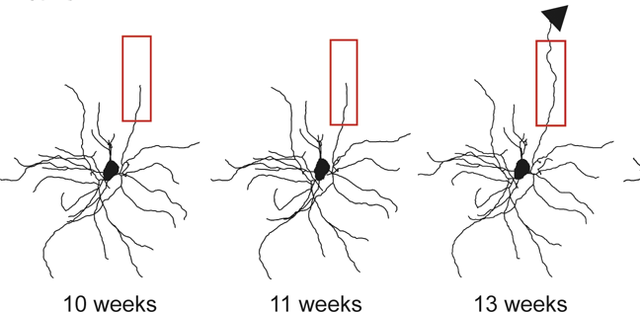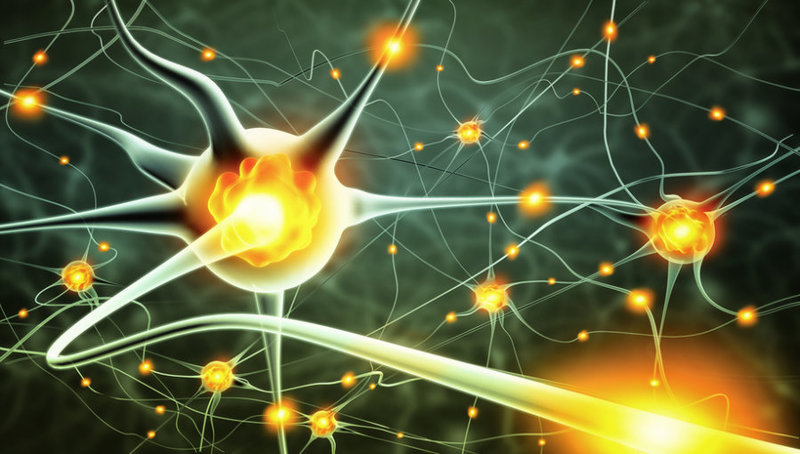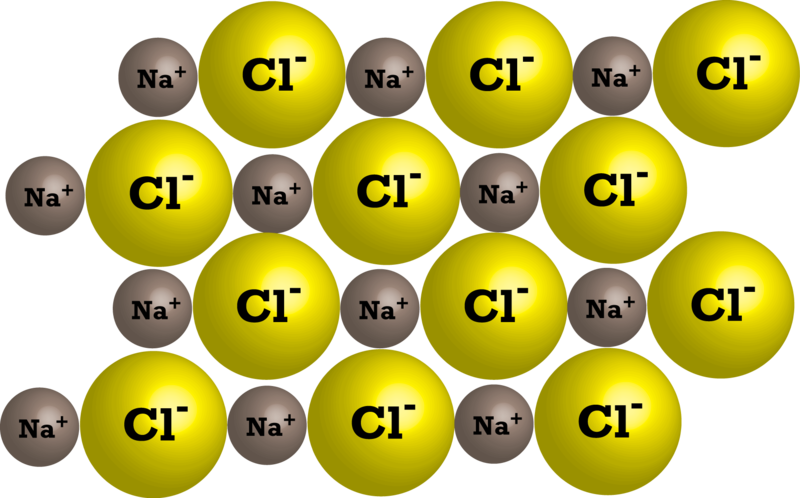Theories, theories, and more theories…
Maybe life within itself is just a “theory”.
Nevertheless, let us continue our theoretical journey of connecting dots and attempting to explain some of the strange occurrences surrounding DMT & Gamma waves. (Warning: Lengthy read)
6. Neurons in the brain and specific correlates throughout the body?
In 2005, the journal Nature published a study in which it was observed that a single neuron in the brain correlated to the recognition of a specific person/face. It is most famously known as the “Halle Berry Cell” which supports the theory of the “Grandmother Cell” (a hypothetical neuron that represents a complex but specific concept or object). Here is an excerpt from the write-up:
“Various pictures of Jennifer Aniston elicited a response in a single neuron inside the medial temporal lobe of another patient. Interestingly, images of her with her former husband Brad Pitt did not sway this cell, the authors of the paper report. Their findings appear this week in the journal Nature.”
“Quian Quiroga also found that a lone neuron in one subject responded selectively to various pictures of the actress Halle Berry – as well as drawings of her and her name written down. Other cells were found to respond to images of characters in The Simpsons or members of The Beatles.”
While the concept of the “grandmother cell” has yet to be universally accepted, it fails to dissuade us from postulating about the possibilities. If a single neuron is observed as being dedicated to one specific “thought” as the 2005 experiment implied, how does this relate to the human body? Could it be that a single neuron in the brain could possibly also correlate with a specific point within the body? In 2010, the book “Micropsychology” was released and authored by physics professor at Howard University, Dr. Yehuda Salu. Here is an excerpt from this book:
“The electric state of the neuron can be measured by an electrode (thin needle) inserted into it or positioned next to it. It is possible to detect when a neuron is collecting electricity and when it fires. By inserting electrodes into neurons at various brain regions and stimulating various body parts, correlations were found between firing neurons at various brain regions and those body parts. The entire surface of the body was divided into small segments – pixels – and neurons that fire in response to specific pixels were identified and mapped. Each such neuron is said to represent its body pixel. Those neurons are organized in a brain area called the sensory part of the sensorimotor cortex.”
“In humans, a certain part of the lower temporal lobe of the brain has also been implicated in facial recognition. Lesions to this region impair one’s ability to recognize even familiar faces. Correlations have been found between the firing of certain neurons and activation of muscle units. Those neurons represent the activity of those muscle units.”
DMT Quest would make an inquiry to Dr. Salu regarding this passage and the experiments that correlated. He would reply, “Experiments of this kind were done around the beginning of the 20th century. Their result are summarized in what is now known as the homunculus. You can read about it in many biology texts. One of the researchers that did interesting experiments on patients that were undergoing brain surgery was Wilder Penfield. A similar approach is being used in studying vision. This is only the “tip of the iceberg”.“
While the complexity of the brain/body relationship is undeniably intricate from multiple systemic perspectives, it appears rather intriguing that specific neurons within the brain can possibly be manipulated to directly effect specific points within the body. If we are to believe the general consensus that the brain is the “master control system” of the body, it would seem important to study the mechanisms in which desired changes can take place and possibly lead to reliable, systematic replication.
(The Homunculus, based on Penfield’s classic diagram)

In 2005, a study from MIT was published in the Public Library of Science outlining the observation of neuron growth in adult humans. This was previously thought impossible but it’s been clear over the past decade that neuroplastic changes can take place within the adult human brain. Here is an excerpt from Science Daily regarding the study:
While scientists have focused mostly on trying to regenerate the long axons damaged in spinal cord injuries, the new finding suggests targeting a different part of the cell: the dendrite. A dendrite, from the Greek word for tree, is a branched projection of a nerve cell that conducts electrical stimulation to the cell body.
“We do see relatively large-scale growth” in the dendrites, Nedivi said. “Maybe we would get some level of improvement (in spinal cord patients) by embracing dendritic growth.” The growth is affected by use, meaning the more the neurons are used, the more likely they are to grow, she said.

In 2014, the journal Science published a study outlining the effects of sleep on dendritic growth in mice. Here are the results of the study:
“We report in mouse motor cortex that sleep after motor learning promotes the formation of postsynaptic dendritic spines on a subset of branches of individual layer V pyramidal neurons. New spines are formed on different sets of dendritic branches in response to different learning tasks and are protected from being eliminated when multiple tasks are learned. Neurons activated during learning of a motor task are reactivated during subsequent non-rapid eye movement sleep, and disrupting this neuronal reactivation prevents branch-specific spine formation. These findings indicate that sleep has a key role in promoting learning-dependent synapse formation and maintenance on selected dendritic branches, which contribute to memory storage.”
This is rather intriguing as we’ve previously outlined the DC shift that takes place in the brain during sleep that appears to simultaneously correlate with DMT synthesis & Gamma Wave formation. The neuronal dendritic branch growth of learned tasks during the mice sleep study seemingly provides support for the potentiality for targeted, real-time dendritic growth and neural connections taking place during the altered states of hypnosis/hypnagogia and meditation. This finding also appears to correlate with the 2015 study published in the journal Neuroimage which observes a measurably bigger brain in the morning following sleep.
As discussed in the first part of our 6-part series, Gamma waves have been distinctly correlated with “new, neural networks forming”. If we are to believe that a specific neuron correlates with a specific image/concept and a different neuron correlates with a specific “body pixel”, could it be that the connection of these two neurons via induced Gamma waves can lead to the “supernormal” results outlined in the series?
An intriguing model/theory was proposed at the INCF Congress of Neuroinformatics in 2011. The proposal provides an additional angle to “chew on” especially as it pertains to the mechanisms driving neuron growth and potential connections:
“Our newfangled work in energetics based simulations established a robust link between the spike-activity characteristics of a single neuron to the intra-cellular energetics parameters leading to fine changes in the dynamics of mitochondria being reflected in the concomitant voltage-spike response (Venkateswaran et. al. 2010). The ensuing phase of the model integrates the anatomical aspects powered by neurogenesis and intra-cellular dynamics of the neuron by linking it through the physiological activity of voltage-gated ion channels.”
This model appears to propose that there is a distinct correlation between neuron growth/development and electrical activity regulated by voltage-gated ion channels. Based on the information we presented in Part 1 of this “Wild Theories” series, it’d appear relevant in regards to DMT’s inhibition of voltage-gated sodium ion channels & the unique electrical activity associated with Gamma waves.
In 2015, a study was published in the journal Science that outlined the fact that a single neuron in the brain may carry over 1,000 genetic mutations. Here is an excerpt from ScienceDaily regarding the finding:
A single neuron in a normal adult brain likely has more than a thousand genetic mutations that are not present in the cells that surround it, according to new research from Howard Hughes Medical Institute (HHMI) scientists. The majority of these mutations appear to arise while genes are in active use, after brain development is complete.
“We found that the genes that the brain uses most of all are the genes that are most fragile and most likely to be mutated,” says Christopher Walsh, an HHMI investigator at Boston Children’s Hospital who led the research.
What they found was that every neuron’s genome was unique. Each had more than 1,000 point mutations (mutations that alter a single letter of the genetic code), and only a few mutations appeared in more than one cell. What’s more, the nature of the variation was not quite what the scientists had expected.
“We expected these mutations to look like cancer mutations,” Walsh says, explaining that cancer mutations tend to arise when DNA is imperfectly copied in preparation for cell division, “but in fact they have a unique signature all their own. The mutations that occur in the brain mostly seem to occur when the cells are expressing their genes.”
“We knew that cells that shared a certain mutation were related, so we could look at how different cells in the adult were related to each other during development,” explains Mollie Woodworth, a postdoctoral researcher in Walsh’s lab. Their mapping revealed that closely relatedly cells could wind up quite distant from one another in the adult brain. A single patch of brain tissue might contain cells from five different lineages that diverged before the developing brain had even separated from other tissues in the fetus. “We could identify mutations that happened really early, before the brain existed, and we found that cells that had those mutations were nestled next to cells that had totally different mutations,” Woodworth says. In fact, the scientists found, a particular neuron might be more closely related to a cell in the heart than to a neighboring neuron.
When factoring in all the studies and theoretical models, the potentials are intriguing…

7. Mechanics of “Miraculous Spontaneous Healing”
It’d seem rather silly for any person with a very basic level of rational, scientific thought process to discount the fact that spontaneous healing of disease has reportedly taken place both in modern times and historically across the entire globe. To a lesser extent, the concept known as the “placebo effect” could be considered to be a milder version of this dramatic phenomenon.
Earlier this year (2016), the Journal of Physiology published a study that outlined the bioelectric mechanism of a genetic disorder that causes facial abnormalities. Here are some excerpts from the write-up of the study at Tufts University:
“Dany Spencer Adams, a research associate professor in the Department of Biology in the School of Arts and Sciences, and colleagues at Tufts, MIT and RMIT University in Australia used an embryonic frog model to demonstrate for the first time that faulty bioelectric signaling is responsiblefor the craniofacial defects associated with the genetic disorder Andersen-Tawil Syndrome (ATS).”
“The work bolsters earlier findings by Tufts researchers that bioelectric signaling in many cell types, not only nerves, plays a major role in how cells create and repair complex anatomical structures, says Michael Levin, A92, director of the Tufts Center for Regenerative and Developmental Biology and a co-author of the study. With that knowledge, he says, it may be possible to alter bioelectrical signaling to correct the effects of genetic mutations or other developmental defects. “That’s the big picture here,” says Levin, who is also the Vannevar Bush Professor in the Department of Biology.
Bioelectricity is also implicated in the development of cancer, says Adams. Cancer cells are too positively charged, compared with healthy cells, and some research has shown that restoring malignant cells’ voltage through ion channel regulation tends to return them to a normal, non-malignant state, she says.
The Adams and Levin labs are two of just a handful in the world studying bioelectricity in cells outside the nervous system. In earlier research, the two teams demonstrated that bioelectric signaling is involved in regulating gene expression and anatomical structure in a range of organs by dictating the fate of cells and tissues during development, regeneration and cancer suppression.
If cancer is considered to originate from the mutation of one’s own DNA that is correlated with abnormal electrical cellular signaling (chronic stress) potentially originating in the brain, it’d seem pertinent to think of the possibilities of “positive” mutation as it pertains to neural correlates extending their signals to specific areas of the body based on stimulation of the neuron/neural correlates. Based on the 2015 study stating that the “genes that are used the most are the most likely to be mutated”, we can theoretically postulate that increasing one’s DMT levels while holding a specific intent (& simultaneously generating a Gamma Wave spike) could possibly alter a person’s neuronal genetic mutations while subsequently forming new pathways/networks based on intent (thought/visualization). This would theoretically then lead to the proper electrical signaling that would reverse the abnormal electrical charge of cancer cells leading to a spontaneous “miraculous” remission. This doesn’t even begin to touch upon the cascade of anti-cancer compounds such as melatonin, glutathione, pinoline, and superoxide dismutase that appear to surge during the mechanics for DMT production.
Like we touched upon in Part 1 of “Wild Theories”, the compounds that we feel are most closely coupled with the “electrical” body would likely be sodium and chloride (salt). It’d seem logical that a fluctuation in these ions from an intracellular/extracellular level would manifest themselves as it pertains to differentiation between diseased cells and healthy cells. As mentioned above by Dr. Adams, cancer cells are more positively charged (less negative ions) than regular cells. This concept was clearly showcased in a 1980 study published in the journal Cancer Research. A more positive charge in cancer cells would also be associated with an excess of sodium ions which was showcased in a separate 1980 study published in Cancer Research.
From an extremely crude observation, it’d appear that possibly inducing an influx of negative ions into the cancer cell would subsequently “fix” the situation.

In 2014, a study was published in the journal Nature Chemistry regarding a synthetic ion transporter that caused apoptosis (death) of cancer cells via an influx of chloride and sodium ions into the cells. The study would take place at the University of Southampton. Here is an excerpt of a write-up of the study from the University website:
Researchers from the University of Southampton are part of an international team that has helped to create a molecule that can cause cancer cells to self-destruct by carrying sodium and chloride ions into the cells. Study co-author Professor Philip Gale, of the University of Southampton, says: “This work shows how chloride transporters can work with sodium channels in cell membranes to cause an influx of salt into a cell. We found we can trigger cell death with salt.”
Cells in the human body work hard to maintain a stable concentration of ions inside their cell membranes. Disruption of this delicate balance can trigger cells to go through apoptosis, known as programmed cell death, a mechanism the body uses to rid itself of damaged or dangerous cells.
One way of destroying cancer cells is to trigger this self-destruct sequence by changing the ion balance in cells. Unfortunately, when a cell becomes cancerous, it changes the way it transports ions across its cell membrane in a way that blocks apoptosis.
One of the key findings was that the cancer cell’s ion concentrations changed before apoptosis was triggered, rather than as a side effect of the cell’s death. “We have thus closed the loop and shown that this mechanism of chloride influx into the cell by a synthetic transporter does indeed trigger apoptosis,” said Professor Sessler. “This is exciting because it points the way towards a new approach to anticancer drug development.”
Perhaps this is partially an aspect of the inherent, innate mechanism of the body to induce spontaneous “miraculous” healing? The brain would undergo a DC shift coupled/signified by DMT release which subsequently reverses impaired signaling which would then send the proper electrical signaling to the cancerous tumor/cells to uptake the correct balance of ions to reverse it’s malfunctioning?
A 2014 paper in the journal Frontiers in Oncology discusses numerous compounds that lead to the depolarization of cancer cells leading to their death. Here is an excerpt from the abstract:
Apoptosis is characterized by cell shrinkage caused by disruption of the maintenance of the normal physiological concentrations of K+ and Na+ and intracellular ion homeostasis. The disrupted ion homeostasis leads to depolarization and apoptosis. Recent evidence suggests that depolarization is an early and prerequisite event during TRAIL-induced apoptosis. Moreover, diverse natural products and synthetic chemicals capable of depolarizing the cell membrane exhibit tumor-selective killingand TRAIL-sensitizing effects.
Yes, yes… we’ve been digressing from the original topic but the importance of postulating about these mechanisms of strange occurrences during hypnosis (growing taller, hair growth, enhanced physical parts) seem eerily similar to those of the “miraculous”. It’d seem that in 2016 it would make little sense to simply throw one’s hands up and either deny these transpirations or attribute them to unexplainable “supernatural” forces. That isn’t to say that the “supernatural” doesn’t exist… we’re merely stating that if we put enough data on the table from multiple perspectives, it wouldn’t be completely outlandish to explain these observations from a basic, biological perspective.
8. Edgar Cayce “The Sleeping Prophet”
As we stated in part 4 of our DMT/Gamma Waves series, hypnagogic techniques were apparently utilized by some of the greatest minds of modern times. Thomas Edison, Nikola Tesla, and Isaac Newton were a few proponents of this EEG alteration method as a way to gain deeper insights and solutions into their work.In 1877, a man named Edgar Cayce was born. While I won’t go into the details of his life, he eventually became known as “The Sleeping Prophet”. The reason for this is because he developed the ability to put himself in a “sleeping” trance (a form of self-hypnosis/hypnagogia) in which he would be asked questions and answer them in a manner he was incapable of during his conscious waking state. Throughout his lifetime, Cayce would give a total of 14,306 transcribed readings with many of them dedicated to diagnosing illnesses.
Based on the information available, it seems as though Cayce was able to easily and consistently maintain a deep level of hypnagogia for extended periods of time. Being that he could not remember any of what he said during his trance sessions, it would appear that he could be categorized as a somnambulist.
While there are many skeptics of Cayce and his reported abilities to reach extremely detailed conclusions and resolutions for sick people, these abilities do not seem overly outlandish when considering the entire body of information presented in our 6 part series. Since Cayce was able to maintain his trance for prolonged periods of time it wouldn’t be surprising if he was generating Theta/Gamma waves constantly while simultaneously synthesizing DMT. There are rumors that much like Einstein, Cayce possessed a larger than average Corpus Callosum but we’ve been unable to verify this rumor.

Here is an interesting excerpt from the book “Edgar Cayce, The American Prophet” – Sydney, Kirkpatrick, pages 123-124:
“By this point in Edgar Cayce’s career, reports of his amazing talents had begun to cross state borders. This was mostly the result of the work of Blackburn’s committee, but also of efforts made by a new friend and admirer- Professor Joe Dickey, who was soon to become the president of Bowling Green Business University. Like Blackburn, Dickey witnessed and conducted numerous trance readings between the years 1905 and 1907, and along with other Cayce supporters, sent a veritable deluge of letters to important people asking that they witness for themselves the Cayce phenomenon.
Among the people that Edgar Cayce saw during this time were the inventors Thomas Edison and Nikola Tesla, who had been invited to Bowling Green Business School by Dickey as part of a university lecture series on modern scientific discoveries. Unfortunately, little is known about these meetings. No documentary evidence exists in the Edison or Tesla archives, and Cayce’s date book and other records pertaining to the meetings were later destroyed in two separate fires at Cayce’s Bowling Green photography studios. Additional correspondence known to have existed between Cayce, Edison, and Tesla was also later destroyed by a well-meaning but short-sighted volunteer at the Edgar Cayce archive in Virginia Beach.
However, while no diary or first-person correspondence now exists to describe the meetings, the original letters from Edison and Tesla would be reviewed by Cayce’s longtime secretary, Gladys Davis, as well as Roswell Field, a Chicago reporter who sought biographical information about Cayce for a Hearst newspaper story in 1911. This evidence, along with the text of a recently unearthed speech Cayce delivered in Washington, D.C., and a brief passage in one of Cayce’s memoirs, provides tantalizing clues as to what may have transpired.
The topic of interest to Edison–like Tesla– was the possible connections between electricity and psychic phenomena. Tesla’s interest in the subject was legendary, for he himself claimed to have received inspiration from his “higher self”, not unlike that received by Edgar Cayce. Through dreams and visions, Tesla received mental pictures of blueprints and other technical data, which included innovations he made on high-frequency electrical transmission and wireless communications. He viewed his role as an inventor as merely tapping into his own imagination and turning what he saw in visions into a physical reality. Tesla’s one-time partner, Edison, did not ascribe his inventions to any such help from “above”. And yet, the fact that Edison developed a keen interest in psychic phenomena and electricity is also well documented, as were his comments to associates concerning his intent to build a device to measure the electrical vibrations emanating from people engaged in psychic activity. Edison’s interest in building such a device may well have been the result of his meeting with Cayce.“
While it appears that there might not be any official documentation in terms of Edison’s or Tesla’s interactions with Cayce, it doesn’t seem unfathomable for them to be interested in a person who could easily prolong a brain wave pattern that they found difficult to sustain.
There’s a reason we titled this series “Wild Theories”. Much of these details will never be proven in this lifetime based on the invasive nature of doing so. However, it doesn’t mean that the end result cannot be replicated and showcased on a consistent basis. Until we’re able to explain all the cute, intricate, super nerdy details… “miracles” will stay “miracles”.
PS. This year, Tufts University presented an extremely interesting study/finding published on their website. It outlines the fact that bioelectrical signaling imprints were observed prior to the formation of a physical structure. I do believe this was observed and documented by Dr. Robert O. Becker in his book “The Body Electric”.“The Tufts biologists found that, before the face of a tadpole develops, bioelectrical signals (ion flux) cause groups of cells to form patterns marked by different membrane voltage and pH levels. When stained with a reporter dye, hyperpolarized (negatively charged) areas shine brightly, while other areas appear darker, creating an “electric face.”
DMT Quest is a non-profit 501(c)3 dedicated to raising awareness and funds for endogenous DMT Research. This specific field of psychedelic research has been underfunded for many decades now. It’s time to take our understanding of human physiology, abilities, and perception to the next level. E-mail me at jchavez@dmtquest.org with any comments or questions. You can also follow us at Facebook, Instagram, or Twitter.
